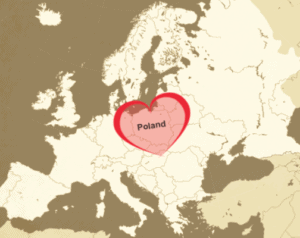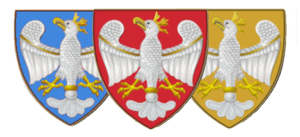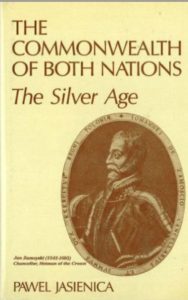Brief History of Polonia (Polish diaspora)
Polonia are Poles who were either born in Poland and came to the United States, or persons born in the United States who are of Polish origin. Polonia does not forget Poland. Frequently, the cherished memories of their native country or of the country of their ancestors inspired and empowered them to do great things for the glory of both of these lands and for the sake of humanity in general.
IN MANY PLACES ON EARTH there are people thinking of Poland, who for different reasons during the farthest stages of the stormy history of Poland, left their country and settled in the farthest corners of the world.
1492
A study tells us that a certain Francisco Fernandez, who accompanied Columbus on his great voyage of discovery, was none other than Franciszek Warnadowicz, a Pole who had settled in Spain.
1585
When establishing his Virginia Colony, the famous English adventurer, Sir Walter Raleigh is said to have used the services of Polish pitch makers who had landed at Roanoke in North Carolina.
1608
On October 1, five Poles reached the shores of the New World on board the English ship “Mary and Margaret.” These men were skilled craftsmen who helped to found the settlement of Jamestown. They opened a glasswork and manufactured pitch, tar, potash and ships cordage. A bronze plaque, commemorating their landing in Jamestown, mentions specifically Michal Lowicki, Zbigniew Stefanski, Jan Bogdan, Jan Mata and Stanislaw Sadowski. This arrival of a group of Polish settlers in the New World, twelve years before the Mayflower, whose passengers are generally considered the pioneers of European civilization on the North American continent, is an established fact.
1653
Olbracht Zaborowski was the first justice of the Peace in Upper Bergen County, NJ, and his grandson Jan Zabrieskie was one of the organizers of the movement against British rule.
1655-1656
In the second half of the 17th century, a large group of Polish Aryans left Poland after the Swedish invasion of 1655-66, and settled in New Amsterdam where they held high posts.
1749
The town and fort of Sandusky on the Ohio River was named after its founder Jan Sadowski.
18th-19th Century
During the Polish struggle against the partitioning powers, Russia and Austro-Hungary, the high principles of Polish emigres won them the respect throughout the world in their struggle “for your freedom and ours”.
A most distinguished place in the history of the American War of Independence was won by two great heroes, Tadeusz Kosciuszko (1746-1817), and Kazimierz Pulaski.
1830
The deportation of hundreds of members of the 1830 Polish Insurrection by the Prussians and Austrians, who loaded them on ships in Gdansk and Trieste, which landed in New York in March of 1834, marked the beginning of large-scale political immigration to the United States. Further immigration by both groups and individuals followed.
1832
Aleksander Bielaski, a railway engineer who came to America in 1832, was one of the constructors of the Illinois Central Railroad. He was a personal friend of President Abraham Lincoln and died fighting in the Civil War.
1848
The Revolution of 1848 against the occupying powers encouraged many to return home hoping for freedom in their homeland. However, new disasters forced some 7,000 leading patriots to leave the country again.
1854
In this year, a Franciscan monk, Father Leopold Moczygemba, arrived with 800 men, women and children and founded Panna Maria, in Texas. He organized a parish called Jasna Gora (The Shining Mountain) in Illinois and became one of the founders of a Polish Theological Seminary in Detroit. Several years later, Kaszubians, an ancient Slavic group, settled in Webster, Detroit, Chicago and Winona.
1857
Maria Elzbieta Zakrzewska, a pioneer of Health Services for women, founded the first American Hospital for Women in New York and another in Boston in 1859.
1861-1865
Over 3,000 Polish men bravely fought in the Civil War against the Confederates. A year after the suppression of the bloody January Polish Insurrection of 1863, 10,000 of its most active participants sought refuge abroad, the majority going to France, the rest going to Turkey and Switzerland.
1870-1914
The significance of the so-called Great Immigration in the history of the Polish nation was due, above all, to the fact that it included not only priests and nuns, peasants and exiled politicians and leaders, but also prominent thinkers, scholars, military men and people in the arts. During the 1870s there were 50,000 Polish immigrants in the United States. In 1882 there were already 200,000; in 1890 the number had grown to 1,000,000; in 1900 the number expanded to 2,000,000; in 1910 there were 2,500,000, of whom 1,600,000 had been born in the United States and spoke Polish. Their struggle for the independence for “Poland and bread” was accompanied by a belief in the brotherhood of all nations. The thoughts of Mickiewicz, cited in the introduction, express these ideas most eloquently. The massive immigration was the basis for the establishment of large Polish centers in the United States. All socioeconomic classes were represented. Their sense of nationality was a common integrating factor under difficult circumstances. Economic reasons were the primary driving force for these immigrations.
1874
In November of this year, the Felician Order of Women arrived in the United States. They responded to a request by Father Jozef Dabrowski to work in Polish centers. The Sisters worked industriously to preserve the best of Polish ethos, especially among children.
1914
The outbreak of the First World War mobilized Poles all over the world to fight for the liberation of their native country. A Polish volunteer corps of 23,000 men was formed in the United States and they fought valiantly in the French Campaign.
1915
The Idea for The Central Polish Committee of Assistance (to Poland) was formed in the United States and it was realized in Switzerland and headed by Henryk Sienkiewicz and Ignacy Paderewski.
1918
The restoration of a free Poland aroused enthusiasm among Poles the world over and many resolved to return to their native country, but disillusion followed. In the chaos of post-war inflation and economic difficulties, after 123 years of foreign domination, many thousands lost all their hard earned savings.
1929-1939
During these years many Poles flowed back into to the United States.
1940
Due to the Second World War, there was an interruption in this flow and it began again in the late 1940s. Finally, the Poles realized that they were no longer immigrants, as Senator S. Nowak stated, but “were becoming part and parcel of the American community.” At this time, they acquired the name ‘Polonia
1945
As a result of the Yalta Agreement, millions of Poles found themselves outside the borders of pre-war Poland. About 150,000 left Poland after September 1939 and more than 600,000 found themselves inside of the Soviet Union. Additionally, during the Nazi occupation, 2,500,000 Poles were deported as slave laborers to Germany. About 300,000 Polish soldiers were in German Prisoner of War camps. Approximately 3,000,000 Poles died in concentration camps and as the result of other atrocities. Another consequence of the war was the fact that the Polish communities in Canada and France each absorbed about 100,000 Poles, Australia absorbed 80,000 Poles and SO,000 not wishing to live under the communist regime in Poland, remained in Germany and other European countries.
1948
A legislative act of that year enabled the United States to carry a larger share of refugees. The Displaced Persons Act admitted 202,000 mainly Polish-speaking persons.
1950s
According to the U.S. Census 861,000 persons living in the United States were born in Poland and 6,000,000 were born on American soil. This new influx of immigrants drastically changed the profile of Polonia. Mutual Aid Societies and Polish parishes extended help and protection to the masses of poor immigrants. Polish schools opened up new prospects for living.
1955
There were 300,000 Polish speaking pupils and 20 Polish American high schools.
Out of a total of about 80 Polish periodicals published in the United States, there were 8 daily and 24 weekly news papers. The tale of the Polish Press in the United States is closely bound up with the history of the immigration from Poland. The first Polish periodical in English was the magazine Poland: Historical, Literap~ Monumental and Picturesque (1841 -1842), published in New York. However, one has to consider Echo z Polski (Echo from Poland), published also in New York, in 1863-1865, the beginning of news periodicals. Both of these were products of the aftermath of Polish uprisings.
The flourishing of the Polish press in the USA came about in the second half of the 19th century. Detroit, one of the largest Polish communities, boasted of having Pielgrzym (Pilgrim), which moved the next year to Chicago as Gazeta Polska Katolicka.
Between 1863 and 1894, there were already 104 Polish newspapers. Most of these were published in Chicago. In 1881, the newly founded Zwiazek Narodowy Polski created Zgoda. This newspaper is still in existence and is one of the oldest Polish newspapers in the USA. A crisis came about in the life of the Polish language press with the introduction of a quota system of immigrants.
Between 1930-1960, the number of Polish periodicals in the U.S. dropped by 56% and the circulation of those periodicals dropped by 47%.
In 1949, there were nine newspapers, not counting weeklies and monthly publications. Fifty years later only two daily newspapers are in existence – Dziennik Zwiazkowy in Chicago and Nowy Dziennik in New York. There were two waves of increases in newspaper publications after World War 11 when 100,000 Poles arrived in the U.S. between 1947-19SS and in the 1980’s with the Solidarity immigration.
During the history of Polonia in the United States innumerable organizations and institutions were founded for the preservation of Polish culture and the dissemination of cultural information, some of which are the following:
Polish American Congress, IL; Kosciuszko Foundation, NY; The Polish Institute of Art and Sciences Inc., NY; The Polish National Alliance, IL; The American Institute of Polish Culture, FL; The American Center of Polish Culture, DC; The Joseph Pilsudski Intitute, NY; The Polish Women’s Alliance, PA; The Polish Falcons of America, PA; American Council for Polish Culture, PA; Polish Association of Former Political Prisoners, NJ; Polish and Slavic Center, NY; Polish Legion of American Veterans, CT; Polish Roman Catholic Union, IL; Polish Scouting Organization, IL.
Due to space limitations the above is only a small portion of an enormous list.
1970
Aloizy Mazewski, President of the Congress of American Poles, said in 1970,
” Of particular interest is the re-emergence of the ethnic awareness amongst 3rd and 4th generation Americans of Polish origin, combined with seeking – in the English language – after the historical and cultural heritage of their ancestors. Another momentous fact is that the members of the Polish intelligentsia, professors and lawyers in particular, are taking an active part in our organizational work. This partly counter balances the gradual disappearance of the Polish districts and the dispersal of Polish settlements, which have broken up our compact community.”
Slowly assimilation and acculturation ensued – but eventually a new wave of immigrants carried the flag of Polonia.
1971
A vigorous offensive by the Polish government was launched to regain the confidence and cooperation of Poles living abroad. Considerable sums of money were released for propaganda purposes and Institutions were organized for that purpose. The main goal was to win the support of the immigrants for the regime and to silence the Polish opposition abroad.
1980s
There was a drastic rise in the number of immigrants during this time after General Jaruzelski tightened restrictions within the country. Most of the new immigrants came from the cities, amongst them, as in the past, were members of Poland’s intelligentsia who felt particularly stifled by repression.
1981-1990
An examination of immigrants from Poland to the United States shows the following numbers:
1981 to 1990, 97,000,; 1991 to 1994, 100,000; in 1995, 14,000, and in 1996, 16,000.
During this period Polonia gave great economic and political support to their compatriots in Poland. Poles were again allowed to receive financial support from the outside. In order to ease the difficult financial situation within the country, a new government policy allowed them to travel and work in the West, thus alleviating their living conditions.
1989-1990
Polonia was following with great anticipation the formation in Poland of the “Solidarity” movement, organized by Lech Walesa. They helped financially and used their influence with the United States government officials and the press. As a result of these helpful activities, Poland attained freedom.
1990s
Since the establishment of a democratic rule in Poland, there are more free and normal ties uniting Poland and Polonia which, thanks to its increasing numbers, is gaining strength and becoming a powerful entity and attaining a leading position in the world. As a result, Poland was able to join NATO.
2004
Poland joins the European Union.
July 1, 2011- December 31, 2011
Poland holds office of Presidency of the European Union.






